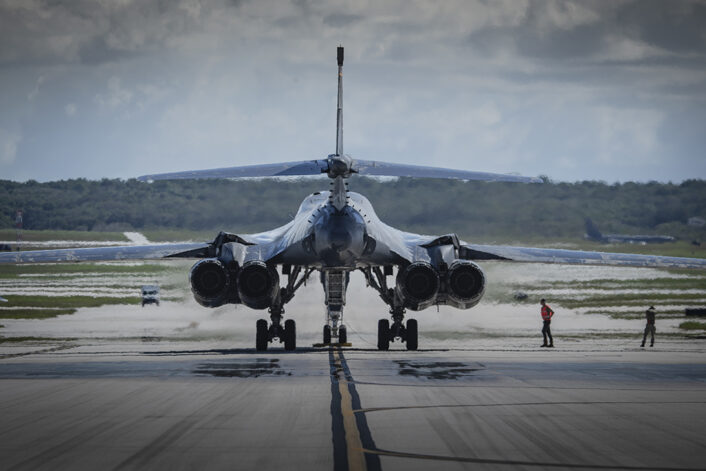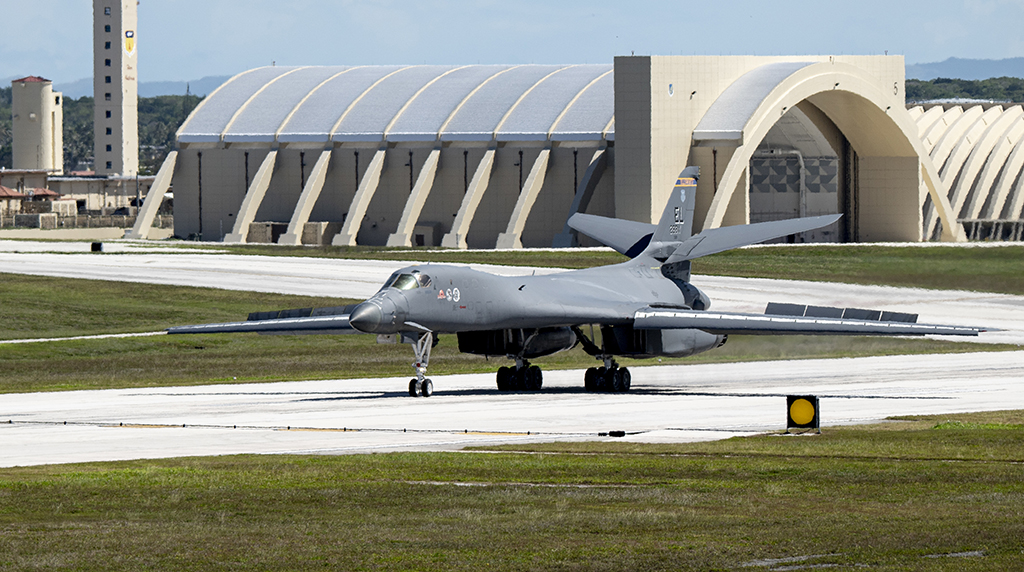U.S. Air Force B-1B Lancers from Ellsworth AFB landed at Andersen AFB in Guam amid growing tensions in the Indo-Pacific region.
Four B-1B Lancer bombers (aka “BONEs” from B-Ones) have deployed to Guam, the U.S. outpost in the North Pacific Ocean, on Jun. 2, 2022. The aircraft, belonging to the 28th Bomb Wing, from Ellsworth AFB, South Dakota, are taking part in a BTF (Bomber Task Force) mission: the variable-sweep wing bombers will carry out PACAF training alongside allies, partners, and the U.S. Indo-Pacific Command Joint Force. The BONEs are also planned to support exercise Valiant Shield, a series of large multi-domain drills underway in the region.
Conducted since 2014, Bomber Task Force missions serve as a way for the U.S. Strategic Command to regularly test and evaluate the readiness of strategic assets, ensuring the security and stability of the Indo-Pacific region. Last time the B-1s deployed to Andersen AFB was in December 2020.
Lt. Col. Ross Hobbs, the 34th Bomb Squadron commander, was quoted by KOTA TV as saying that the presence of the Bomber Task Force and flights throughout the region serve two strategic purposes; which are the assurance to U.S regional allies through consistent presence and multi-lateral integration, and deterrence of U.S. adversaries that continue to threaten stability of the world’s diplomatic, military, and economic spheres of influence.
It is quite likely that, flying in pairs, the B-1s will soon start conducting missions across the region, possibly operating near the Korean peninsula too, as a show of force against North Korea, that is reportedly preparing for a new nuclear test.
For instance, in 2017, hours after Kim Jong Un had said that Pyongyang would soon test a hydrogen bomb over the Pacific, B-1B Lancer bombers from Guam, along with U.S. Air Force F-15C Eagle fighter escorts from Okinawa, Japan, flew in international airspace over waters east of North Korea, a mission that marked the farthest north of the Demilitarized Zone (DMZ) any U.S. fighter or bomber aircraft had flown off North Korea’s coast in the 21st century. Moreover, as we pointed out back then, unlike all the previous ones, that sortie was flown at night, hence it was not just a show of force staged to take some cool photographs.

Early in 2021, the U.S. Air Force has started to divest 17 B-1B aircraft from the current fleet of 62 Lancers, leaving 45 in the active fleet in accordance with the National Defense Authorization Act. According to the U.S. Air Force, of the 17 B-1 aircraft, four will be required to remain in a reclaimable condition that is consistent with Type 2000 recallable storage: in other words, they can be resurrected (as for instance done with the B-52s) when needed.
The divestment will allow the U.S. Air Force to focus maintenance and depot-level manpower on the remaining aircraft, increasing readiness and paving the way for the bomber fleet modernization and the introduction of the B-21 Raider now slated to carry out its first flight next year.













